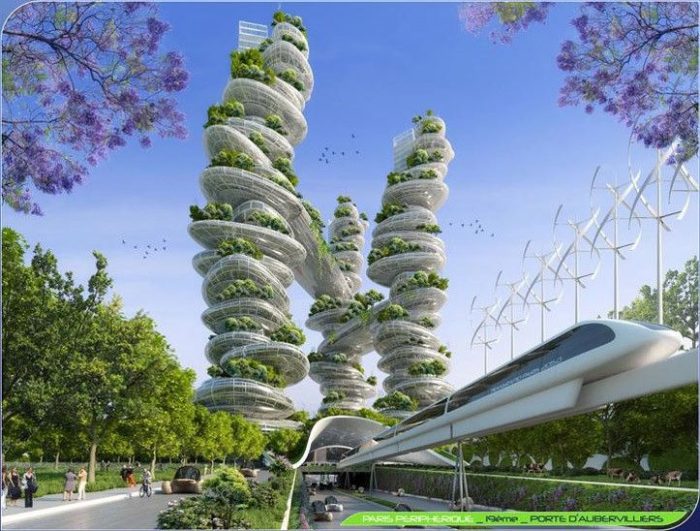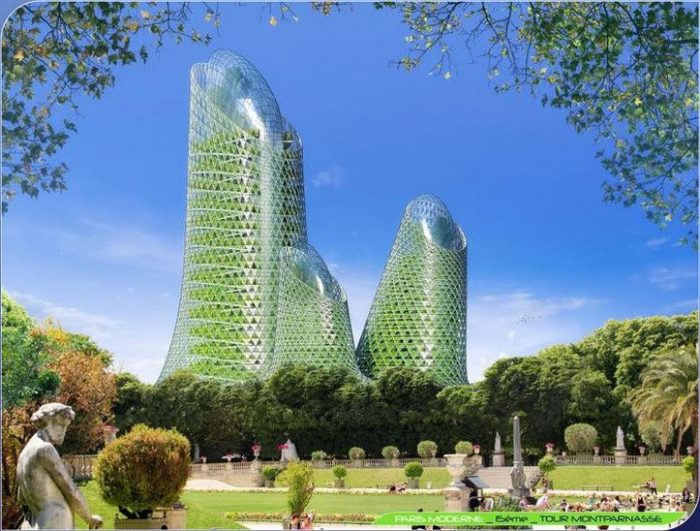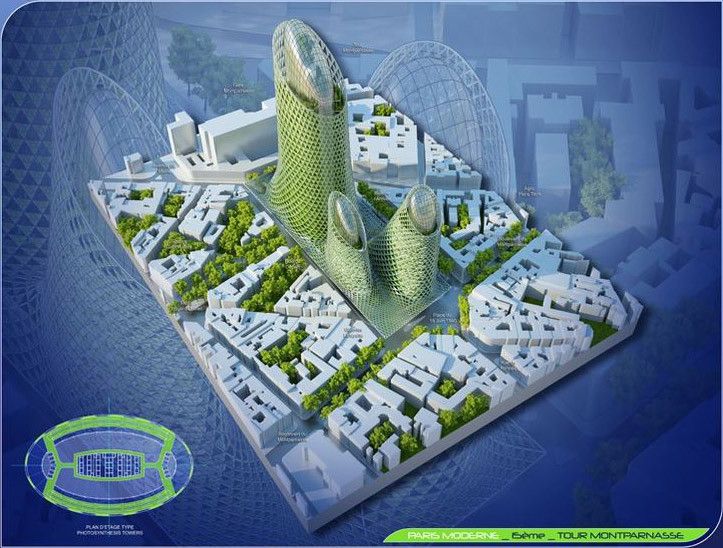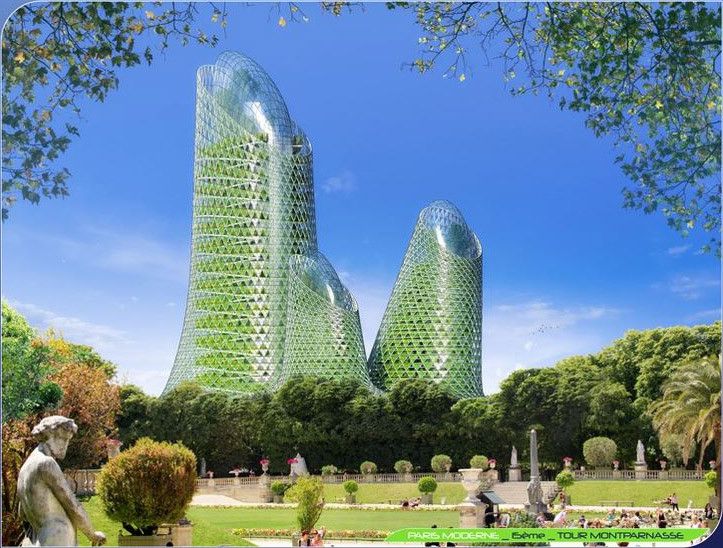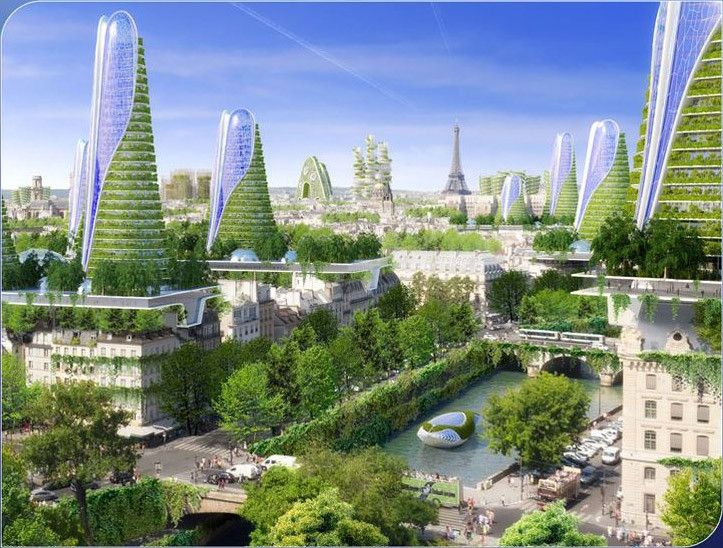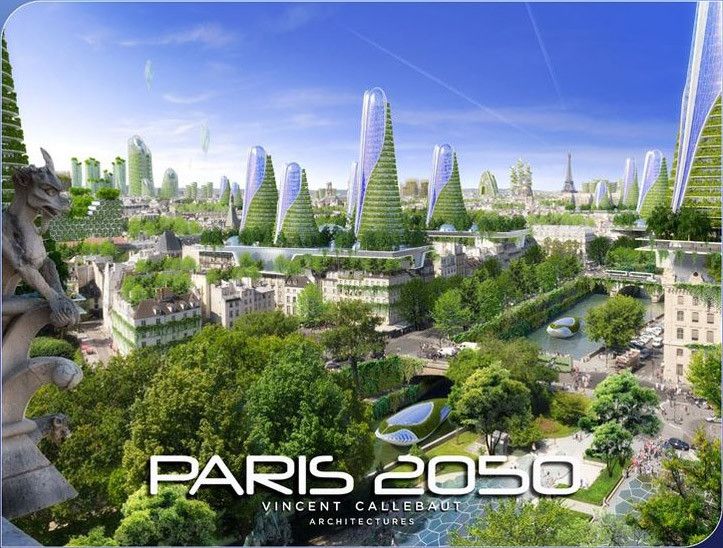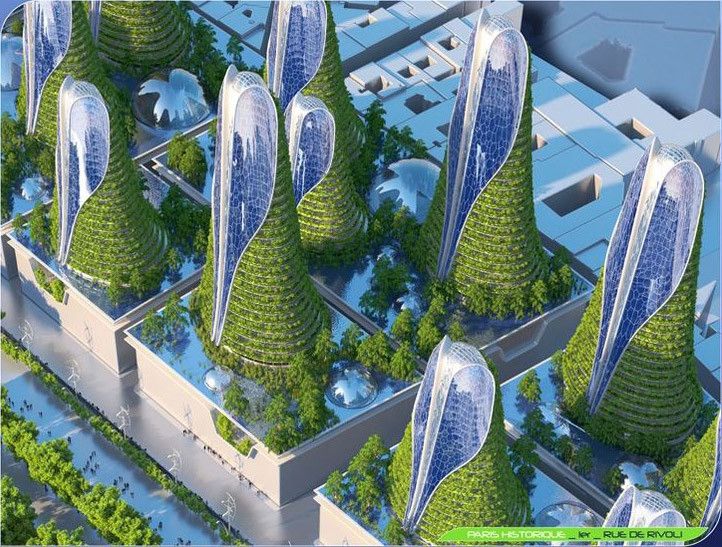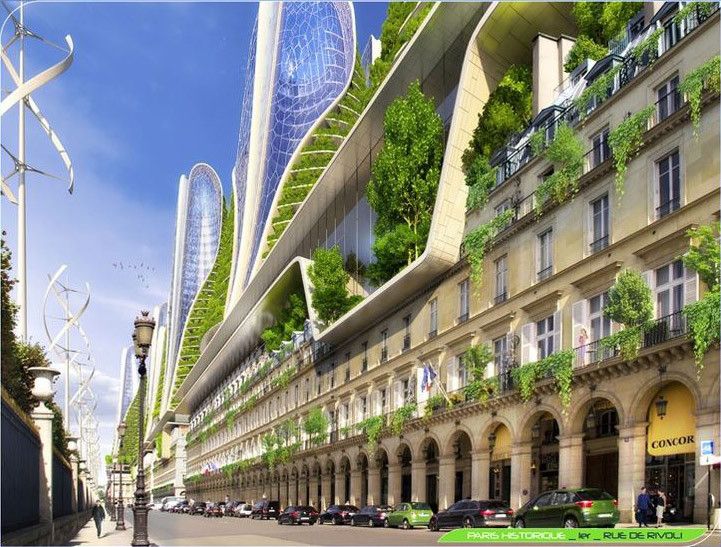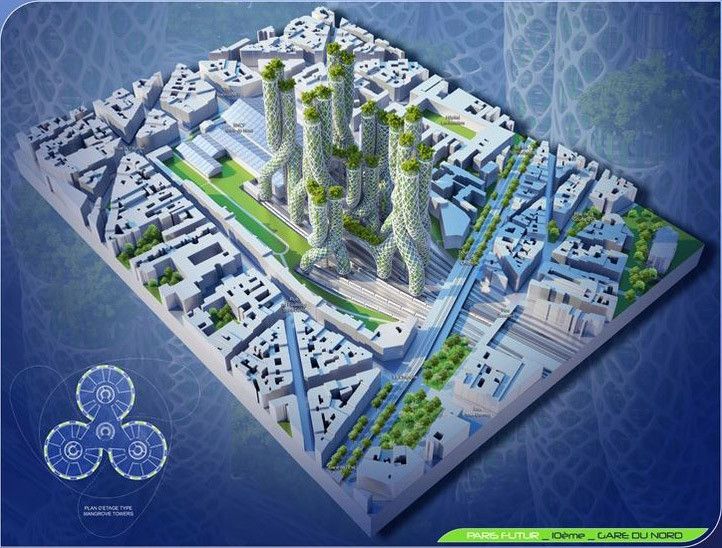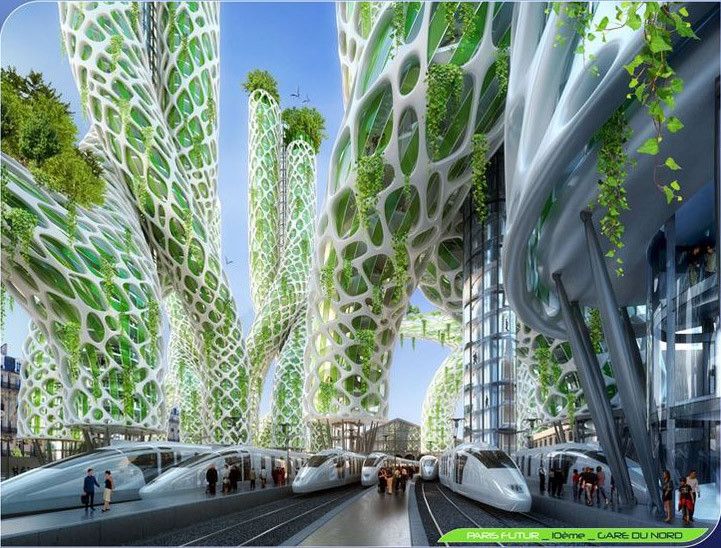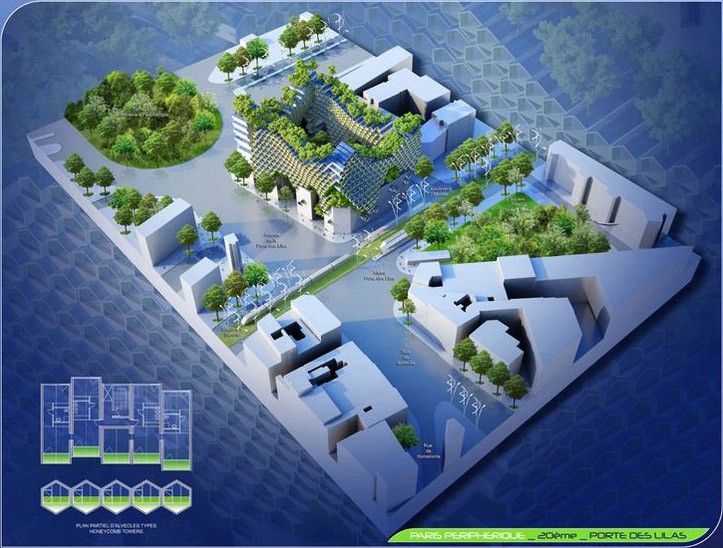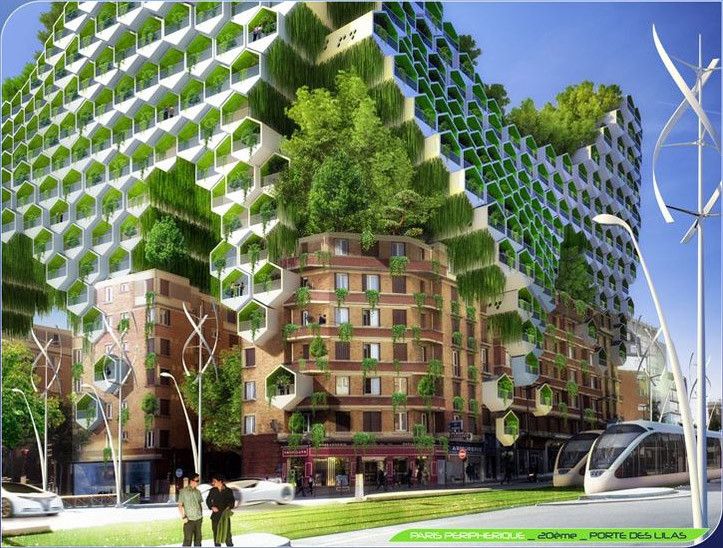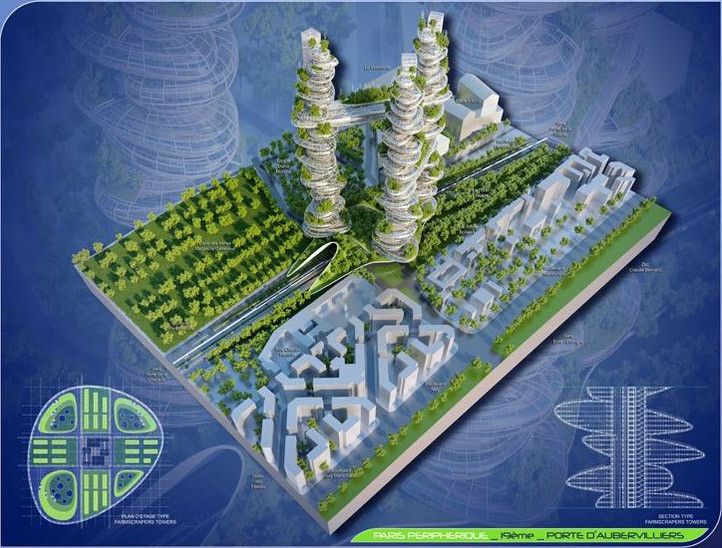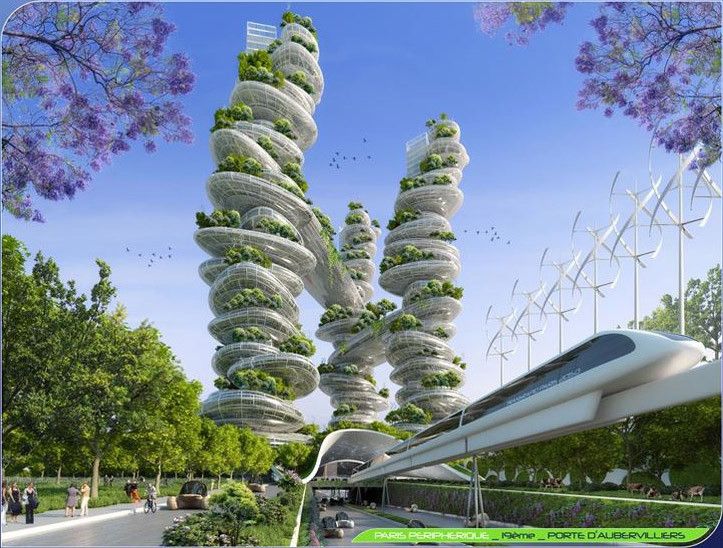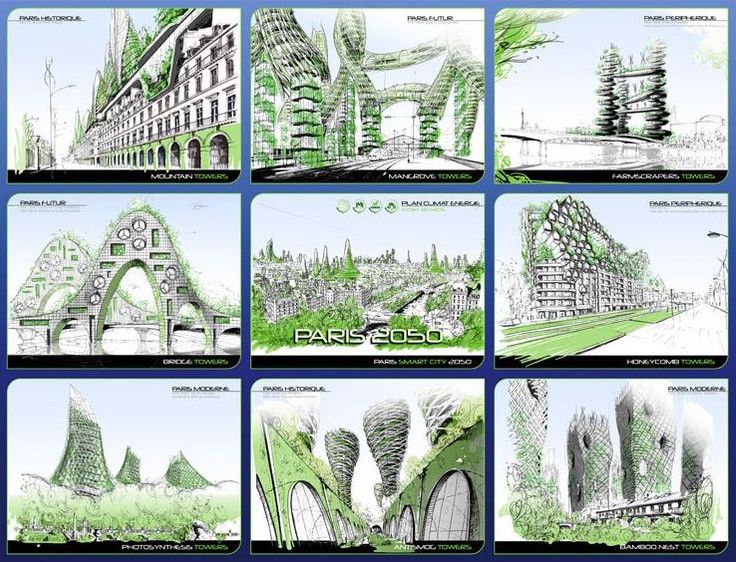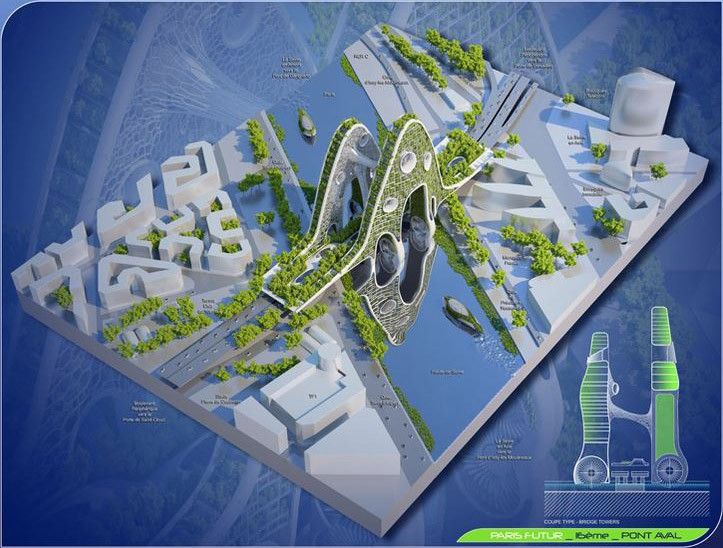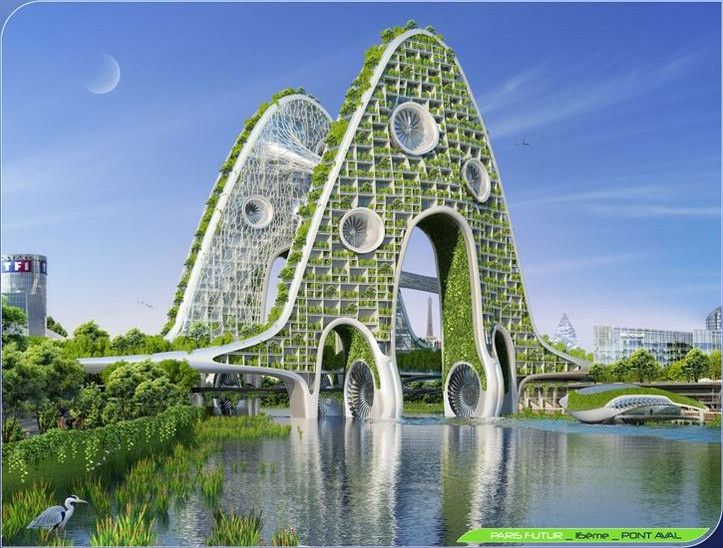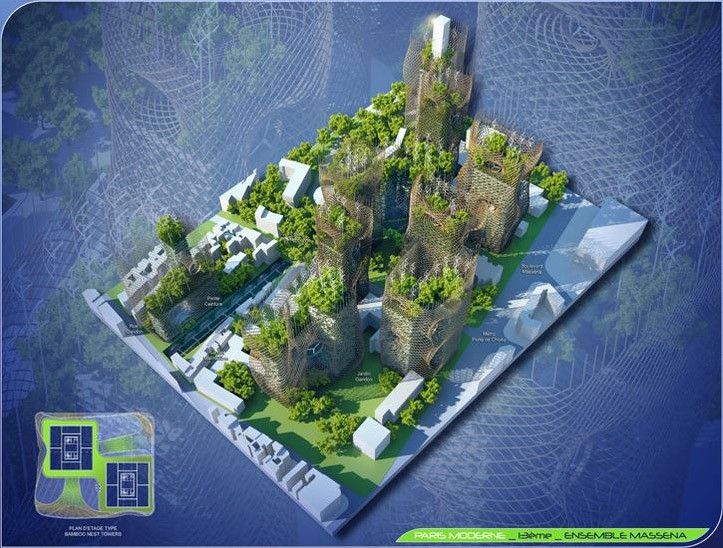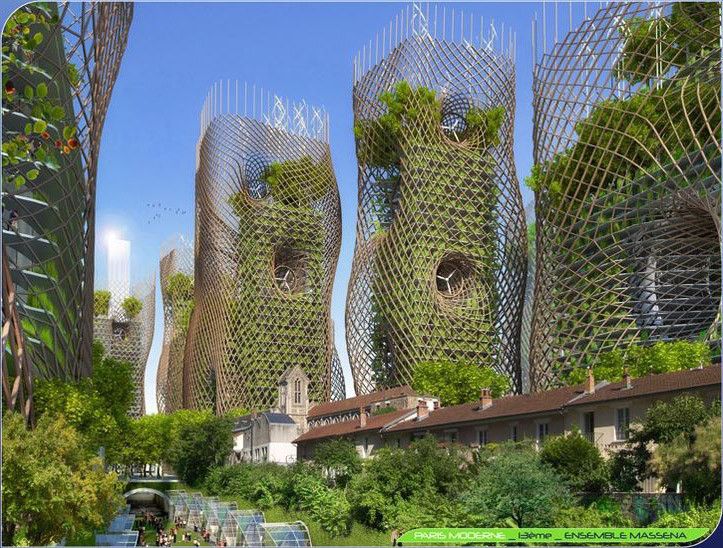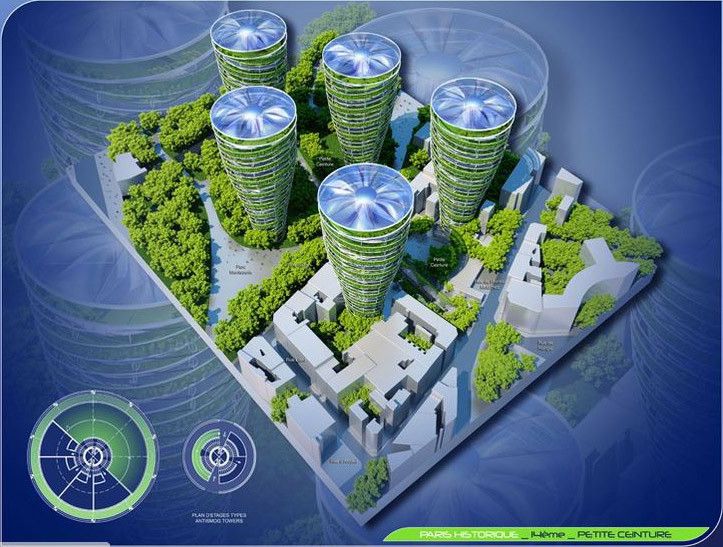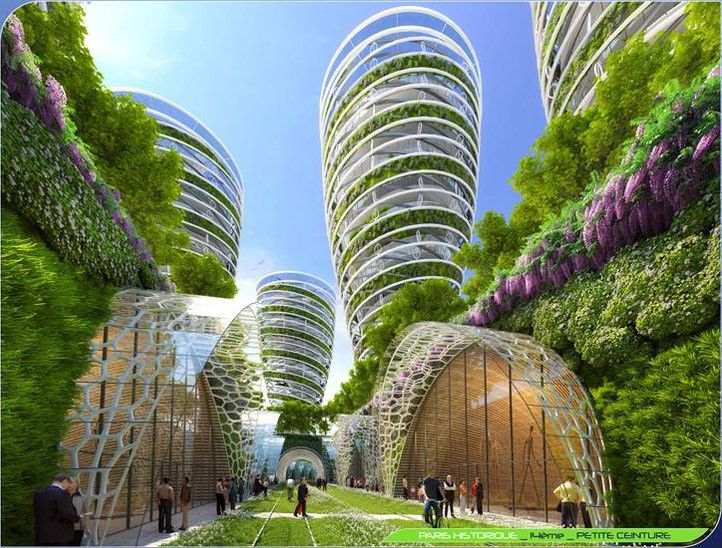Paris Smart City 2050
If Vincent Callebaut Architectures have it their way, Paris 2050 would become a paradise of plant – embedded smart architecture. These architecture is part of the paln to both address Paris’ housing and density issue by developing multiple high-rise buildings with positive energy output (BEPOS). Comprised of eight multi-use structures inhabiting various locations within Paris. This plan strives to address major sustainability problems affecting each district, while providing key functions for the city. To meet the Paris’s Climate Energy Plan to reduce 75% of greenhouse gas emissions in the next 35 years, the architecture firm collaborated with engineers at Setec Bâtiment to design eight prototypes for towers that could bring greenery back into the city and provide sources of renewable energy.
Each of the tower systems fits within its existing context with forms informed by nature. Natural processes (passive heating and cooling, oxygenation, rainwater retention) are utilized wherever possible to create self-sustaining units. Additionally, the insertion of green spaces, namely community and suspended gardens, bring the purifying effects of rural life into the city and encourage residents to involve themselves in cultivating a sustainable lifestyle.
In addition to passive and natural energy-conserving strategies, the Smart City also employs innovative techniques. The skins of the towers, for example, respond to sunlight in ways that positively impact the thermal load. The skin of the “Mangrove Towers” is composed of individual cells which form a photo-sensitive electrochemical shell, utilizing the sunlight that hits it to generate electricity for the building. Similarly, the “Photosynthesis Towers” employ an insulating bio-façade, which generates its own usable biofuel. Other technology that supports Smart City’s self-sufficiency is the “phylolight,” a hybridized turbine-lamp system which supplies both lighting and the energy needed to produce it.
All towers’ programs are mixed-used, combining residential, business, and commercial functions, which are divided internally. This attempts to solve the need for extensive transportation which is a good solution to combat the heat island effect. The Smart City reinforces the idea that cities can expand and at the same time, retain its character and contribute to a greener future.
BY: Delia Chang
Courtesy of Vincent Callebaut Architecture
Courtesy of Vincent Callebaut Architecture
Courtesy of Vincent Callebaut Architecture
Courtesy of Vincent Callebaut Architecture
Courtesy of Vincent Callebaut Architecture
Courtesy of Vincent Callebaut Architecture
Courtesy of Vincent Callebaut Architecture
Courtesy of Vincent Callebaut Architecture
Courtesy of Vincent Callebaut Architecture
Courtesy of Vincent Callebaut Architecture
Courtesy of Vincent Callebaut Architecture
Courtesy of Vincent Callebaut Architecture
Courtesy of Vincent Callebaut Architecture
Courtesy of Vincent Callebaut Architecture
Courtesy of Vincent Callebaut Architecture
Courtesy of Vincent Callebaut Architecture
Courtesy of Vincent Callebaut Architecture
Courtesy of Vincent Callebaut Architecture
Courtesy of Vincent Callebaut Architecture


